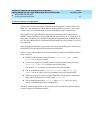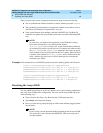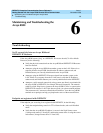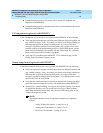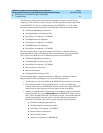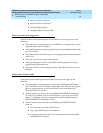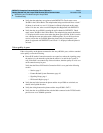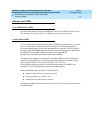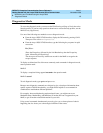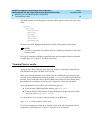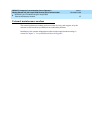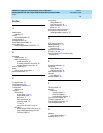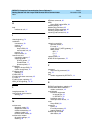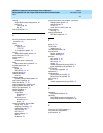
DEFINITY Enterprise Communication Server Release 9
Getting Started with the Avaya R300 Remote Office Communicator
Issue 1
November 2000
Maintaining and Troubleshooting the Avaya R300
96Terminal Server mode
6
The MAX provides system diagnostic commands which appear in the System > Sys Diag
menu:
System
Sys Diag
Restore Cfg
Save Cfg
Use MIF
Sys Reset
Term Serv
Upd Rem Cfg
To enter a command, highlight the command in the Sys Diag menu and press Enter.
NOTE:
To use these commands, the operator must have sufficient permissions in the active
Security profile.
For a list of commands available from the DO menu and a description of those commands,
see MAX Reference, Chapter 2, DO Menu Commands.
Terminal Server mode
Typing the Term Serv command in the diagnostic window, or selecting Terminal Server
from the DO menu starts a terminal-server session.
When you access the terminal- server mode of the Avaya R300, the system displays the
terminal- server command-line prompt (by default, ascend%). For information about the
terminal- server commands, enter a question mark at the prompt. For more details about
the terminal- server interface, see the Network Configuration Guide for your MAX.
Access the terminal- server mode in one of the following ways:
■ From the Avaya R300 diagnostics window, type term serv.
■ From the MAX VT100 interface, display the DO menu by pressing Ctrl-D. Then
press E or select E=terminal server.
Use the terminal- server to ping or telnet to another Avaya R300 unit.
Type quit to exit the terminal- server mode.
For a list of commands available in the terminal server mode and a description of those
commands, see MAX Reference, Chapter 3, Terminal Server Commands.



